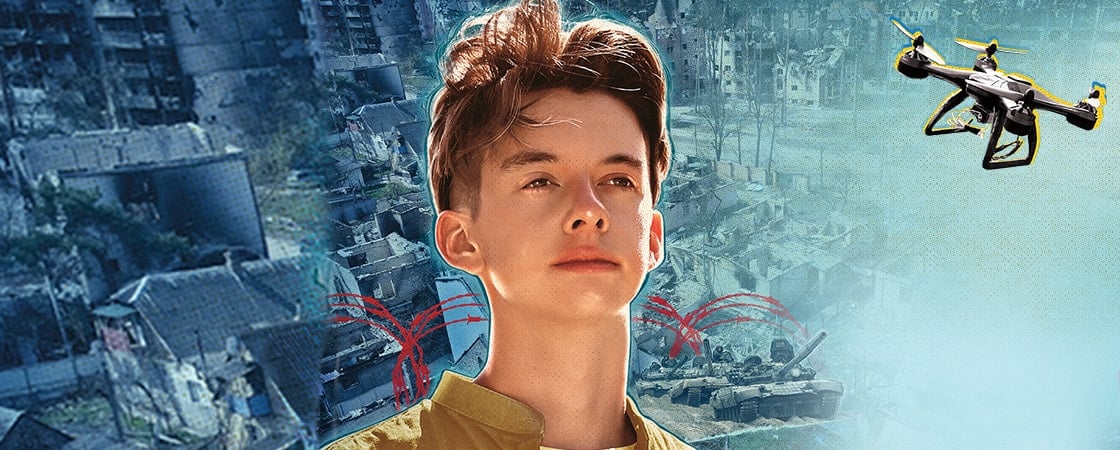16-year-old Igor Klymenko and his family huddled together in their basement. They sat in complete darkness, listening to the sounds of explosions tearing through the night.
It was February 24, 2022, in Vasylkiv, Ukraine. Early that morning, Russia had launched a full-scale attack on Ukraine. Bombs had rained down on cities and towns. Missiles had hit military bases, apartment buildings, hospitals, and shopping complexes. Millions of Ukrainians had run for their lives.
Igor, his younger sister, and his parents had hastily grabbed whatever they could carry. Then they had fled their apartment in Kyiv, the capital of Ukraine. Their plan was to pick up Igor’s grandparents and cousin and get to their country house in Vasylkiv, a town 23 miles away. Two other family members would meet them there. They hoped the house’s basement would protect them from falling bombs and missiles.
But once in the basement, they had no idea if they were truly safe.
“The biggest fear was all the unknowns,” Igor remembers. “We didn’t know if a missile could drop on our town, if Russian soldiers could come to our town.”
No one in Igor’s family would sleep that night, but no one dared turn on a light. Instead, they stayed hidden in the dark for hours, watching the door that led to the yard shake and rattle from the force of the bombs falling mere miles away.
All they could do was hope that the violence outside—and across Ukraine—would not reach their doorstep. All they could do was hope that their friends and loved ones would be OK. All they could do was hope that they would all survive until morning.
16-year-old Igor Klymenko huddled with his family in their basement. They sat in darkness. The sounds of explosions tore through the night.
They were in Vasylkiv, Ukraine. It was February 24, 2022. Early that morning, Russia had attacked Ukraine. Bombs had rained down on cities and towns. Missiles had hit military bases, apartment buildings, hospitals, and shopping complexes. Millions of Ukrainians had run for their lives.
Igor, his younger sister, and his parents had grabbed whatever they could carry. Then they had fled their apartment in Kyiv, the capital of Ukraine. They picked up Igor’s grandparents and cousin and went to their country house in Vasylkiv, a town 23 miles away. Two other family members met them there. In the basement, they hoped they would be safe from falling bombs and missiles.
But they had no idea if they were truly safe.
“The biggest fear was all the unknowns,” Igor remembers. “We didn’t know if a missile could drop on our town, if Russian soldiers could come to our town.”
No one in Igor’s family slept that night. But no one dared turn on a light. Instead, they stayed hidden in the dark for hours. The force of bombs falling just miles away shook a door that led outside.
All they could do was hope that the violence outside—and across Ukraine—would not reach them. All they could do was hope that their friends and loved ones would be OK. All they could do was hope that they would all survive until morning.



